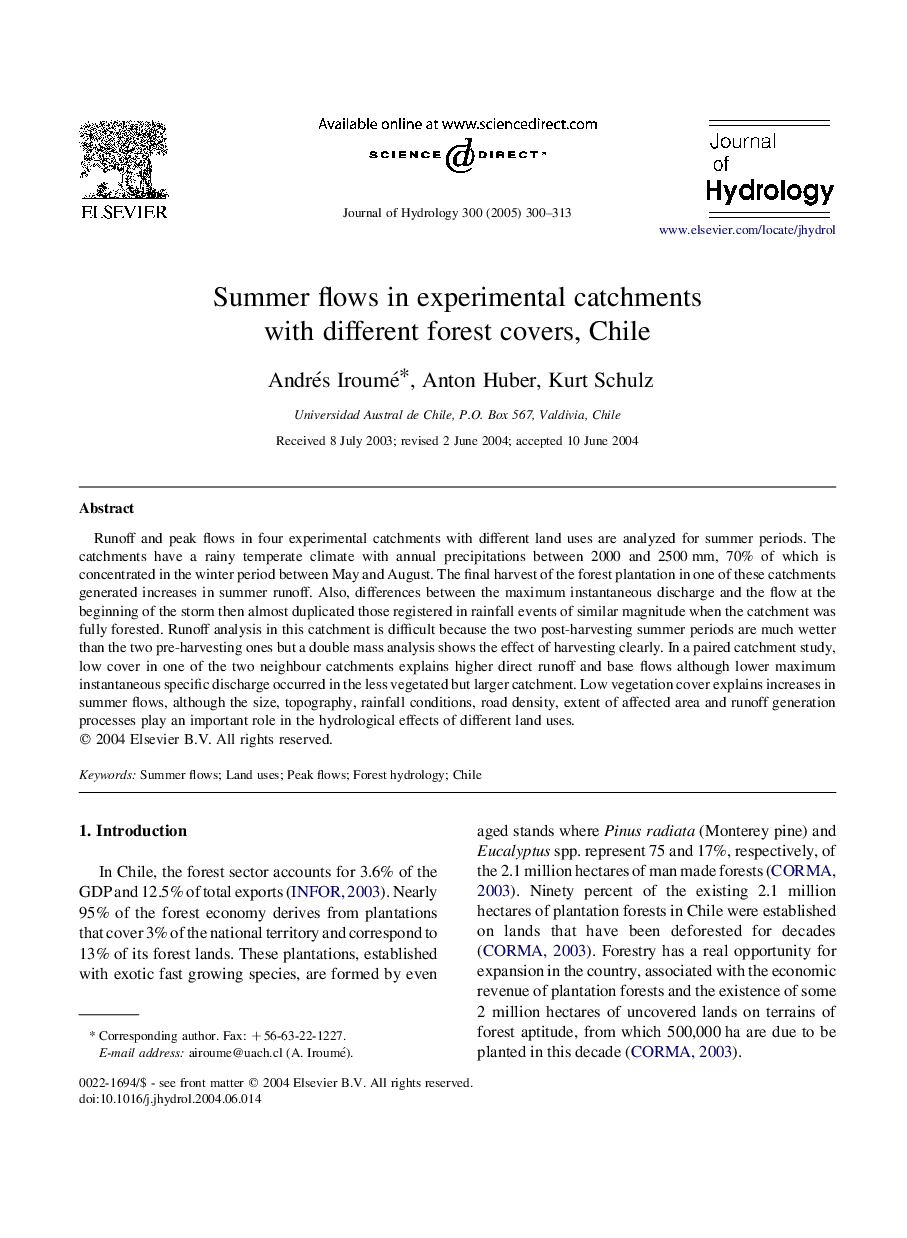| Article ID | Journal | Published Year | Pages | File Type |
|---|---|---|---|---|
| 9491612 | Journal of Hydrology | 2005 | 14 Pages |
Abstract
Runoff and peak flows in four experimental catchments with different land uses are analyzed for summer periods. The catchments have a rainy temperate climate with annual precipitations between 2000 and 2500Â mm, 70% of which is concentrated in the winter period between May and August. The final harvest of the forest plantation in one of these catchments generated increases in summer runoff. Also, differences between the maximum instantaneous discharge and the flow at the beginning of the storm then almost duplicated those registered in rainfall events of similar magnitude when the catchment was fully forested. Runoff analysis in this catchment is difficult because the two post-harvesting summer periods are much wetter than the two pre-harvesting ones but a double mass analysis shows the effect of harvesting clearly. In a paired catchment study, low cover in one of the two neighbour catchments explains higher direct runoff and base flows although lower maximum instantaneous specific discharge occurred in the less vegetated but larger catchment. Low vegetation cover explains increases in summer flows, although the size, topography, rainfall conditions, road density, extent of affected area and runoff generation processes play an important role in the hydrological effects of different land uses.
Related Topics
Physical Sciences and Engineering
Earth and Planetary Sciences
Earth-Surface Processes
Authors
Andrés Iroumé, Anton Huber, Kurt Schulz,
